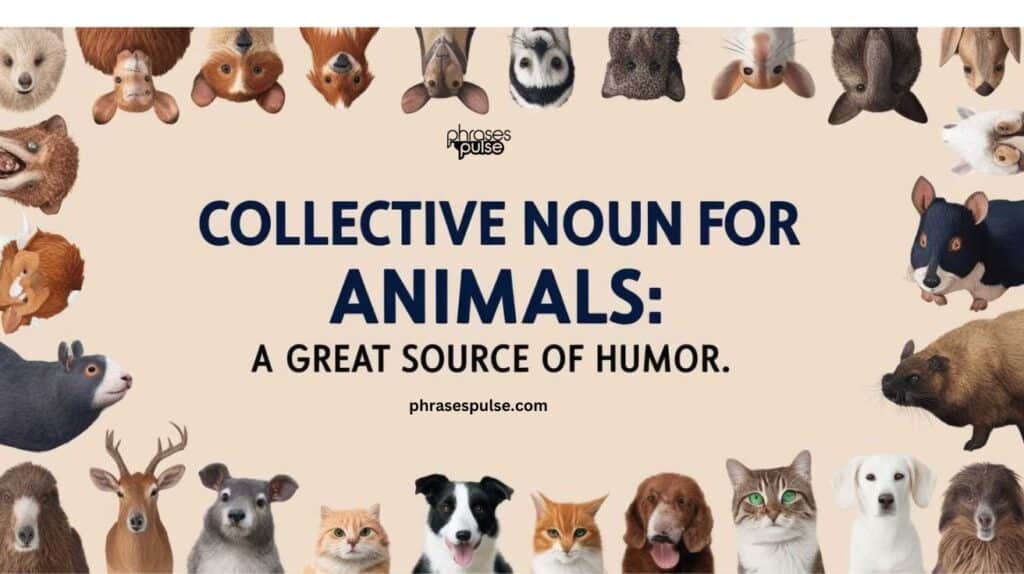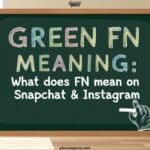Collective noun for animals provide us with a wonderful opportunity to be creative with language. They often evoke strong images that help us visualize the behavior and characteristics of different animal groups. For instance, calling a group of geese a gaggle can bring to mind a noisy, bustling gathering, while a school of fish conjures up the image of synchronized swimming. These terms reveal how humans interpret animal behavior and interactions, making them not just practical but also entertaining.
Using collective nouns can also inject humor into conversations. When you tell someone about a bloat of hippos lounging in a river, it’s hard not to smile. These names often reflect the unique traits of the animals, making them memorable and engaging. By using animal collectives, we can share fun facts and stories about wildlife in a way that captures attention and sparks curiosity.
Comprehensive Collective Noun for Animals

When exploring collective nouns for animals, you find a rich tapestry of terms that describe different species. Here’s a look at some common and unique collective nouns across various categories.
For birds, you have a flock of sparrows, a murder of crows, and a parliament of owls. In the mammal world, you can use pack for wolves, herd for elephants, and sleuth for bears. Fish swim in schools, while insects often gather in swarms. For reptiles, a group of crocodiles can be called a bask. These group names show how diverse and imaginative our language can be when describing animal species.
Each collective noun adds a layer of meaning, making communication more colorful and engaging. It encourages curiosity about animal behavior and habitats, enhancing our understanding of wildlife.
Collective Noun for Birds
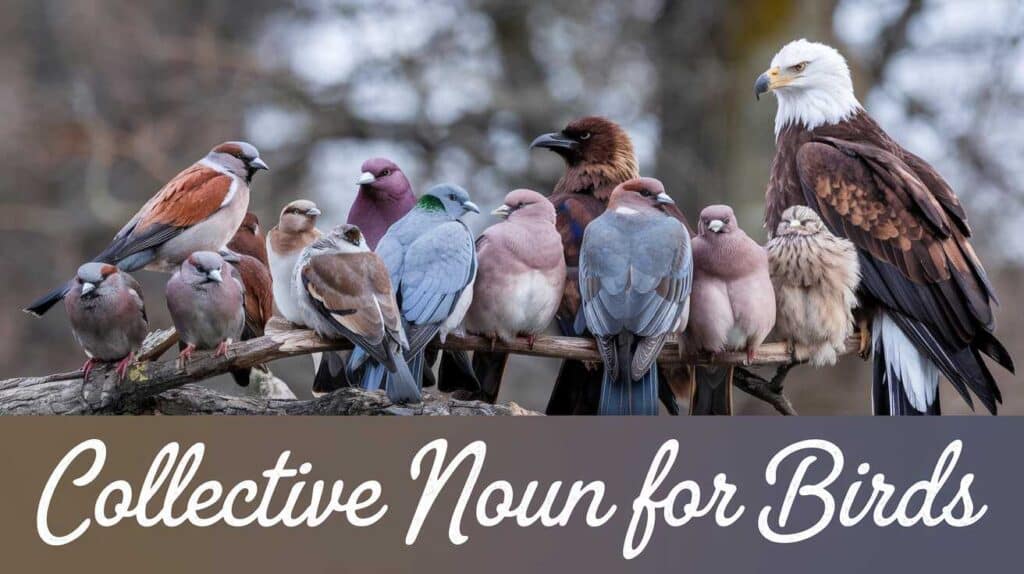
Birds have some of the most delightful collective nouns in the animal kingdom. The term flock is the most commonly used, applying to many bird species. A murder of crows is particularly famous, capturing the often dark and mysterious nature of these intelligent birds. The parliament of owls evokes images of wise old creatures gathering to discuss their surroundings.
These collective nouns reflect the social dynamics of birds. For example, a kettle of hawks describes a group soaring together in a thermal updraft. Understanding these terms deepens our appreciation for avian life and encourages children to engage with nature, enhancing their learning experiences. The unique expressions related to bird groups can spark interest in outdoor activities and nature exploration for kids.
| Collective Noun | Example |
|---|---|
| Flock of birds | A flock of birds flew across the sky. |
| Flight of swallows | The flight of swallows danced above the river. |
| Murder of crows | A murder of crows gathered in the trees. |
| Gaggle of geese | A gaggle of geese waddled by the pond. |
| Parliament of owls | The parliament of owls hooted at night. |
Collective Noun for Mammals
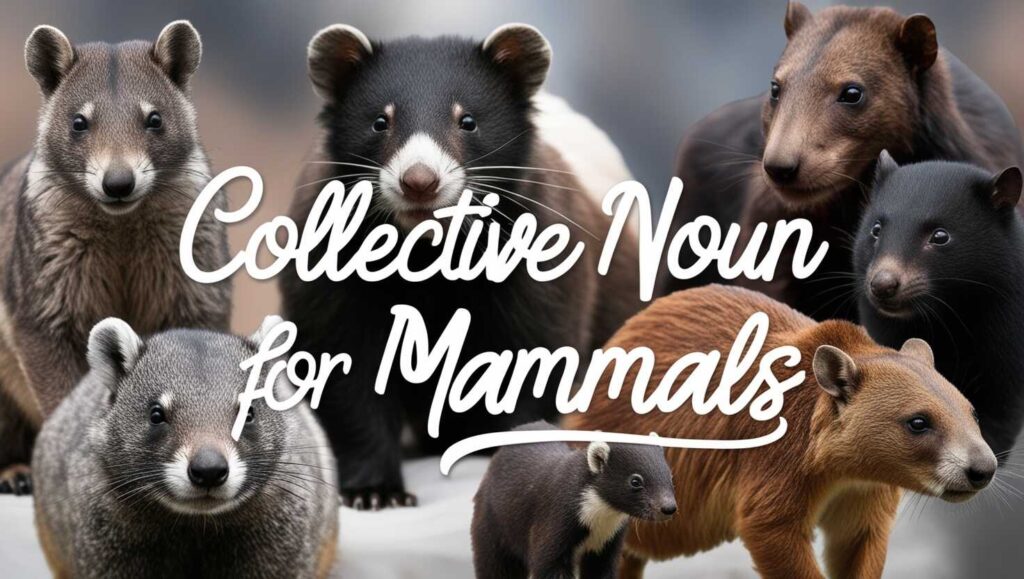
In the mammalian world, collective nouns often reflect the animals’ size, behavior, and social structure. A herd of elephants moves gracefully across savannahs, while a pack of wolves hunts strategically in unison. These terms help us appreciate the beauty of animal relationships.
For instance, a sleuth of bears portrays the solitary yet social nature of these powerful creatures. Each collective noun highlights characteristics unique to the species, allowing us to connect with wildlife in meaningful ways. Learning these animal terms can inspire young explorers to seek out and understand the behavior of mammals in their habitats. Encouraging children to discover these words promotes nature appreciation and enhances their outdoor experiences.
| Collective Noun | Example |
|---|---|
| Pack of wolves | A pack of wolves howled under the full moon. |
| Herd of buffalo | The herd of buffalo grazed peacefully. |
| Pod of dolphins | A pod of dolphins leaped joyfully in the waves. |
| Pride of lions | The pride of lions rested in the shade. |
| Skulk of foxes | A skulk of foxes darted through the bushes. |
Collective Noun for Fish
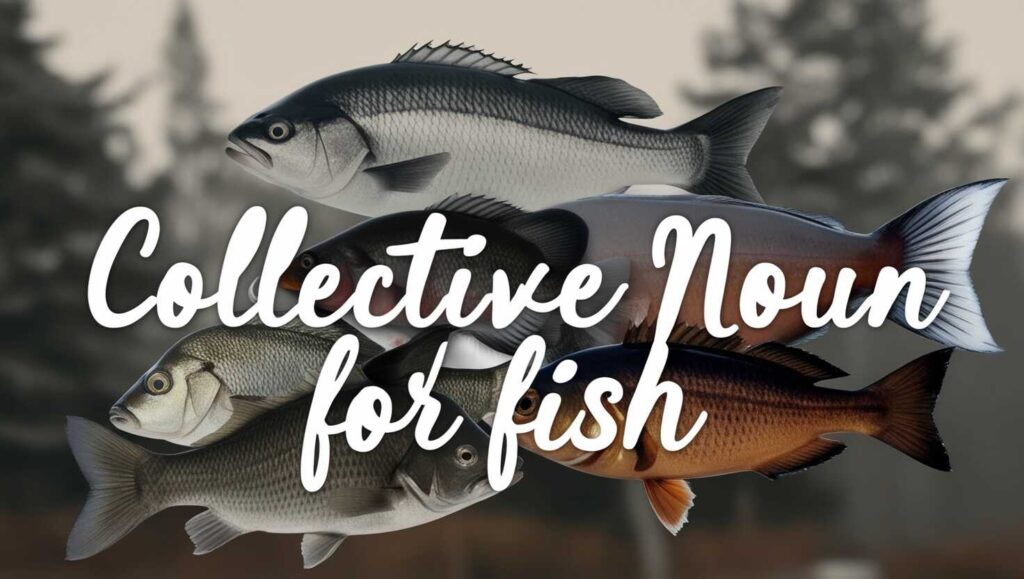
When it comes to aquatic life, collective nouns for fish often reflect their schooling behavior. A school of fish can be mesmerizing, showing how they swim together in harmony. Another term, shoal, is used to describe a loosely grouped collection of fish that may not swim in synchronized patterns.
Fish exhibit fascinating social interactions, making these terms more than just words. For example, you might find a run of salmon during spawning season, illustrating their unique migratory behavior. Teaching kids about these aquatic group names can make learning fun and engaging, encouraging them to explore their local rivers and lakes. This connection with nature fosters a deeper appreciation for wildlife and inspires outdoor play and activities.
| Collective Noun | Example |
|---|---|
| School of fish | A school of fish swam past the coral reef. |
| Shoal of fish | A shoal of fish shimmered in the sunlight. |
| Run of salmon | The run of salmon traveled upstream to spawn. |
Collective Noun for Insects
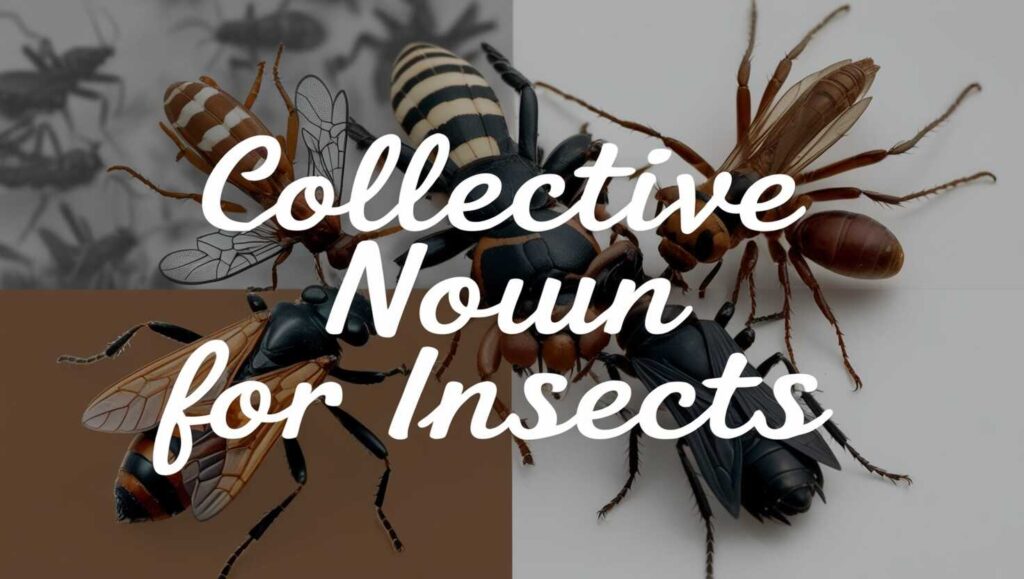
Insects showcase an incredible diversity of collective nouns. A swarm of bees buzzes busily around their hive, while a cloud of gnats flits through the air, creating a captivating dance. These collective terms reflect the fascinating social structures of these tiny creatures.
Another interesting term is army of ants, illustrating their industrious nature as they work together to build their colonies. The collective nouns for insects reveal their behaviors and roles in the ecosystem, allowing us to appreciate their importance. Engaging children with fun facts about insects can spark their curiosity and inspire them to get outside and explore the world around them.
| Collective Noun | Example |
|---|---|
| Swarm of bees | A swarm of bees buzzed around the flowers. |
| Colony of ants | The colony of ants marched in a straight line. |
| Plague of locusts | A plague of locusts devastated the crops. |
| Army of ants | An army of ants worked together to carry food. |
Collective Noun for Reptiles
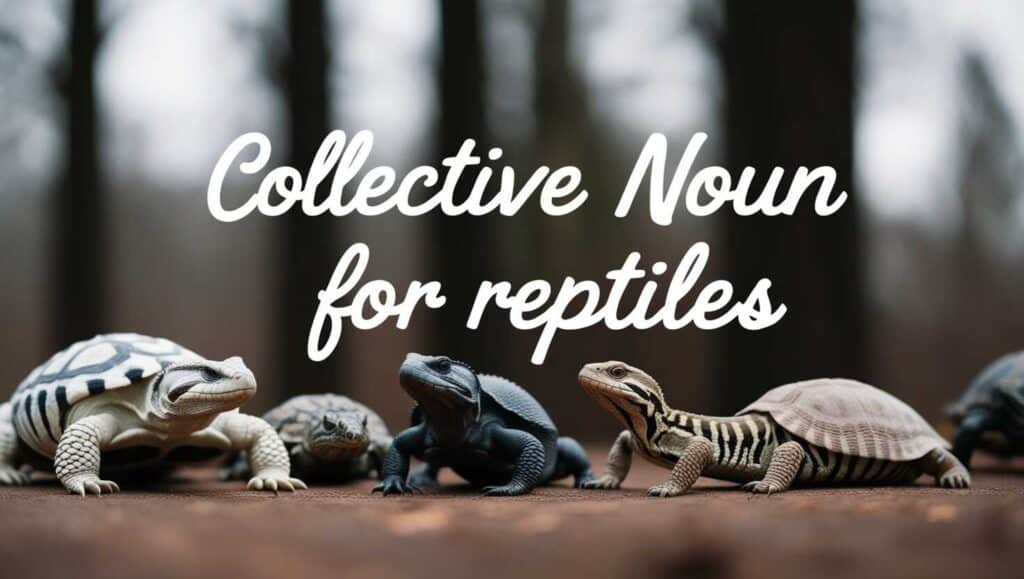
Reptiles may not be as commonly discussed, but they have unique collective nouns that capture their essence. A bask of crocodiles describes a group sunbathing on the riverbank. This term perfectly illustrates their behavior as they seek warmth and energy from the sun.
For snakes, the term nest can refer to a gathering of young snakes, while lamentation can describe a group of lizards. Each of these terms highlights the fascinating traits of reptiles, inviting curiosity about their lives and habitats. Learning about these collective nouns encourages children to engage with their surroundings and promotes outdoor education, creating lasting memories in nature.
| Collective Noun | Example |
|---|---|
| Bask of crocodiles | A bask of crocodiles lounged on the riverbank. |
| Nest of snakes | A nest of snakes slithered through the grass. |
| Lounge of lizards | A lounge of lizards basked in the sun. |
Funny and Unusual Collective Noun for Animals
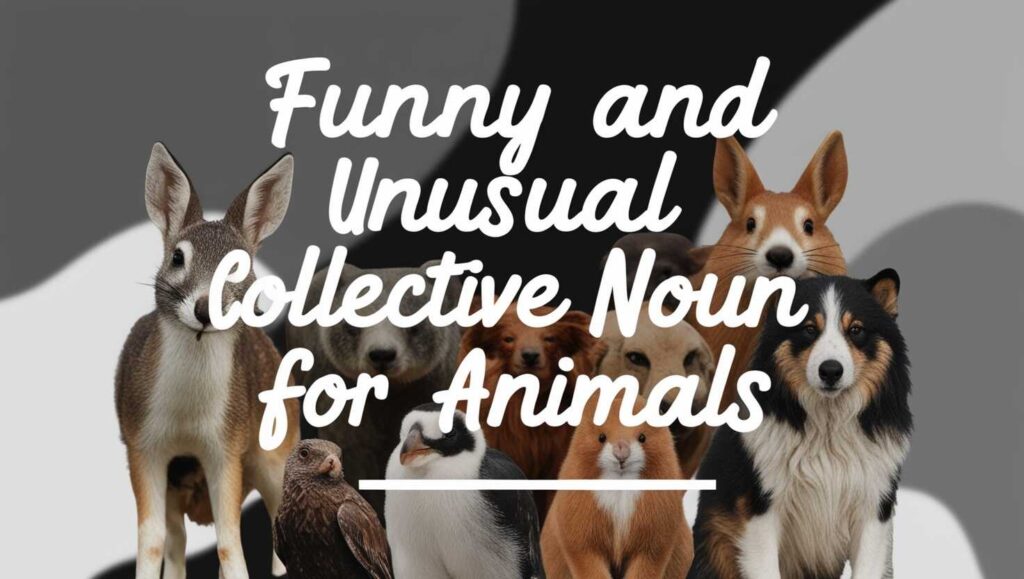
Funny and unusual collective nouns add an element of whimsy to language. For example, a bloat of hippos not only describes a group but also evokes a humorous image of these massive creatures lounging together. A murder of crows sounds sinister yet intriguing, making it a memorable phrase.
These quirky terms bring joy to conversations and can be a fun way to engage children in language learning. Sharing these unique expressions encourages creativity and sparks interest in the animal kingdom. By discovering and using these fun animal names, kids can develop a love for words and nature simultaneously.
How to Use Collective Noun in Sentences
Understanding how to use collective nouns in sentences enriches communication. For example, you might say, “A gaggle of geese waddled across the field.” This sentence paints a clear picture and brings the scene to life.
Using these terms can enhance storytelling, allowing for more vibrant descriptions. Instead of simply saying, “There were many fish,” you can say, “A school of fish swam gracefully through the coral reef.” This approach makes writing more engaging and memorable. Encouraging children to practice using collective nouns can help them become more confident in their language skills while fostering a love for nature and wildlife.
Collective Noun for Animal Families
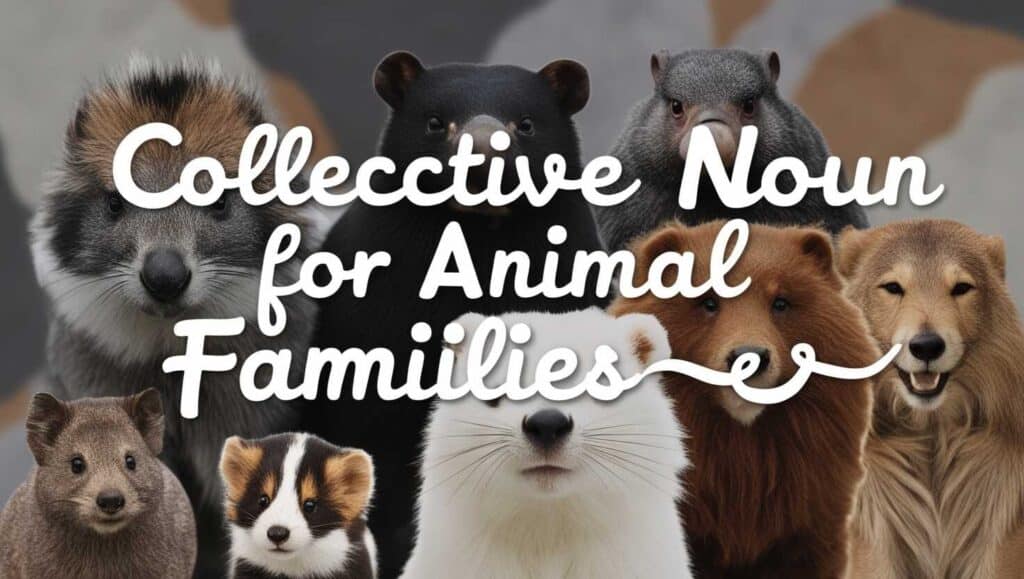
When discussing collective nouns for animal families, we explore the bonds within species. A pride of lions captures the familial nature of these magnificent cats. Similarly, a kettle of hawks refers to a family group soaring together in the sky. These terms highlight kinship and social structures among animals.
Understanding these collective nouns can deepen our appreciation for animal behavior. For instance, a litter of puppies shows the nurturing bond between a mother dog and her young. By exploring these terms, children can learn about family dynamics in the animal kingdom, promoting connection with nature and understanding of wildlife.
More Fun Animal Collective Noun
There are countless more fun animal collective nouns waiting to be discovered. A drove of pigs highlights their social nature, while a murmuration of starlings describes the stunning aerial displays these birds perform. These unique expressions can spark curiosity and inspire further exploration of language and wildlife.
Encouraging children to seek out and learn about these terms can lead to wonderful outdoor adventures. It promotes active play and enhances their connection to the environment, fostering a lifelong love for nature and learning.
Other Collective Nouns for Animals
| Collective Noun | Example |
|---|---|
| Business of ferrets | A business of ferrets played in the garden. |
| Dazzle of zebras | A dazzle of zebras grazed on the savanna. |
| Army of frogs | An army of frogs croaked loudly at night. |
| Conspiracy of lemurs | A conspiracy of lemurs plotted in the trees. |
| Crash of rhinos | A crash of rhinos charged across the plains. |
Conclusion
In conclusion, collective nouns for animals provide a fun and creative way to enrich our language. These terms offer insight into animal behavior and relationships, while also bringing joy and humor to our conversations. By sharing and exploring these unique expressions, we can inspire curiosity and a love for the natural world, encouraging children to engage with their surroundings. So next time you see a herd of elephants or a murder of crows, remember the beauty of language and the stories that animals tell through their group names.

Ava Rose, the creator of PhrasesPulse, is an expert in English grammar with years of experience. She is dedicated to simplifying complex grammar rules and exploring the richness of English phrases. Through her insightful posts, Ava aims to help learners of all levels enhance their understanding of the language and communicate more effectively. Her passion is making grammar approachable and enjoyable for everyone.

